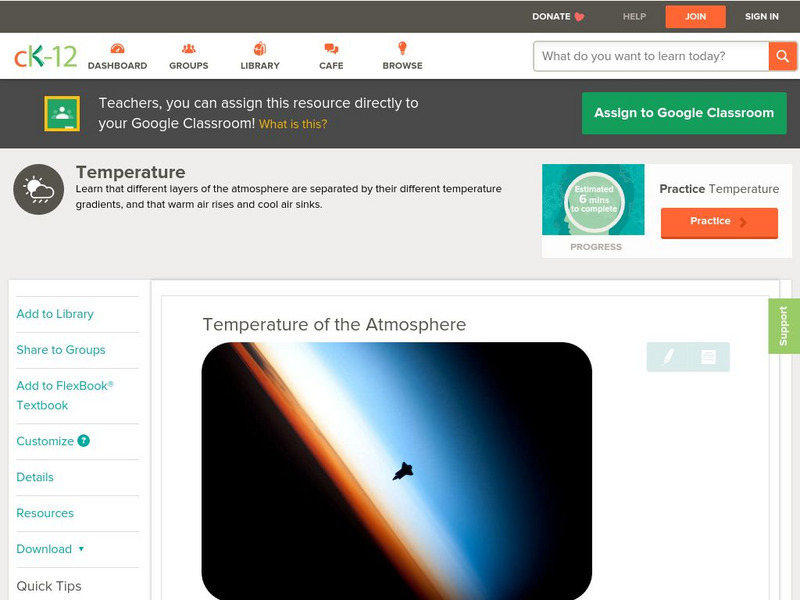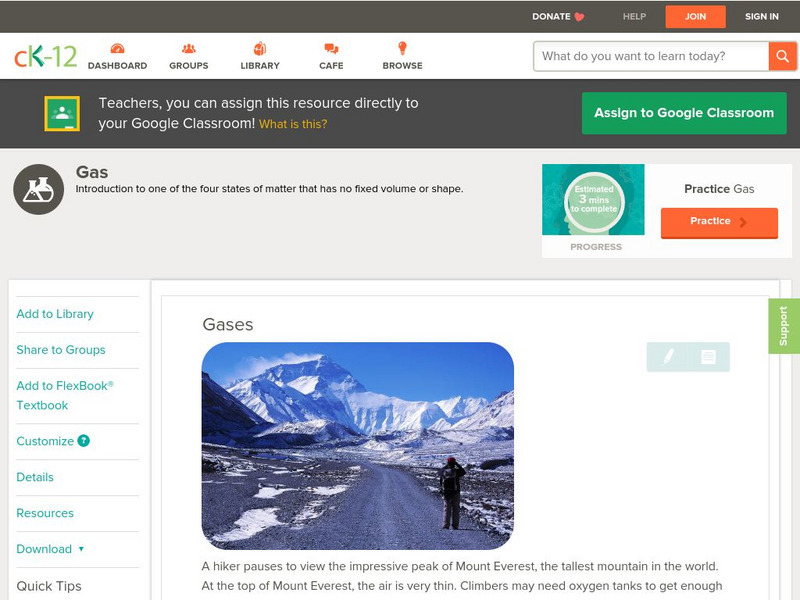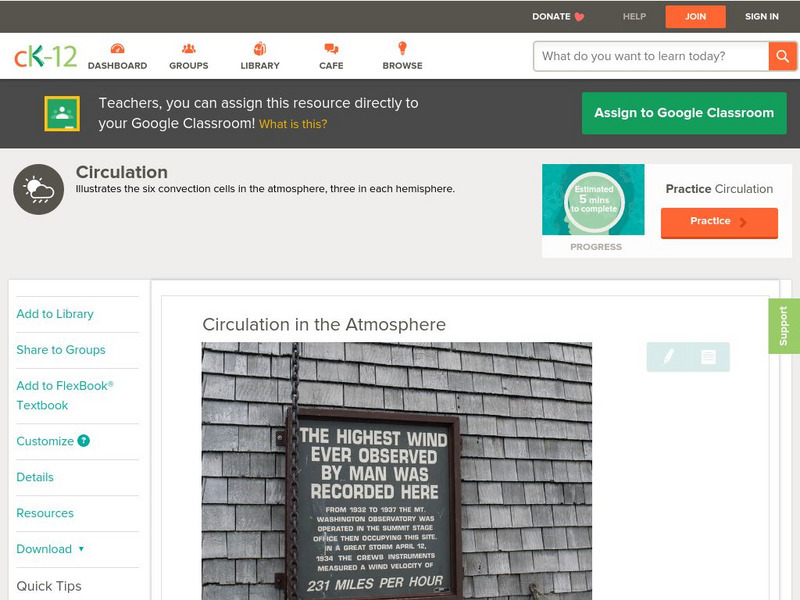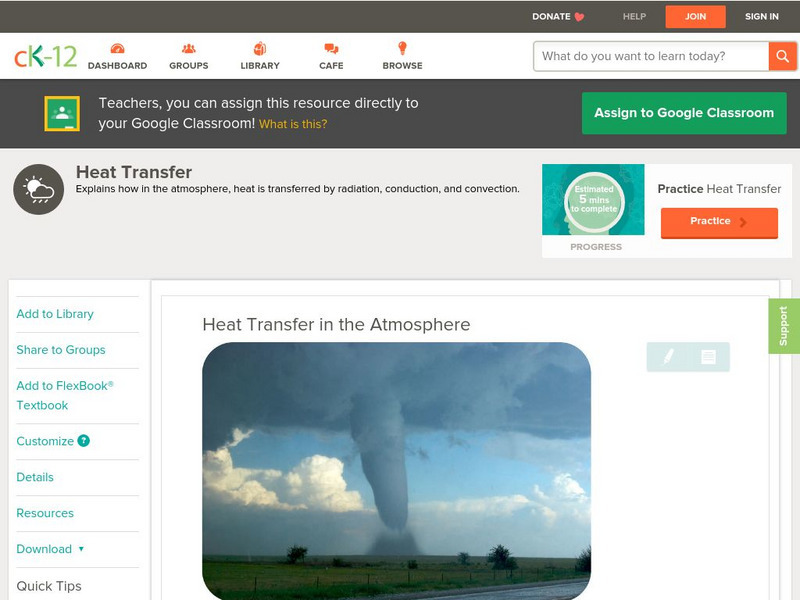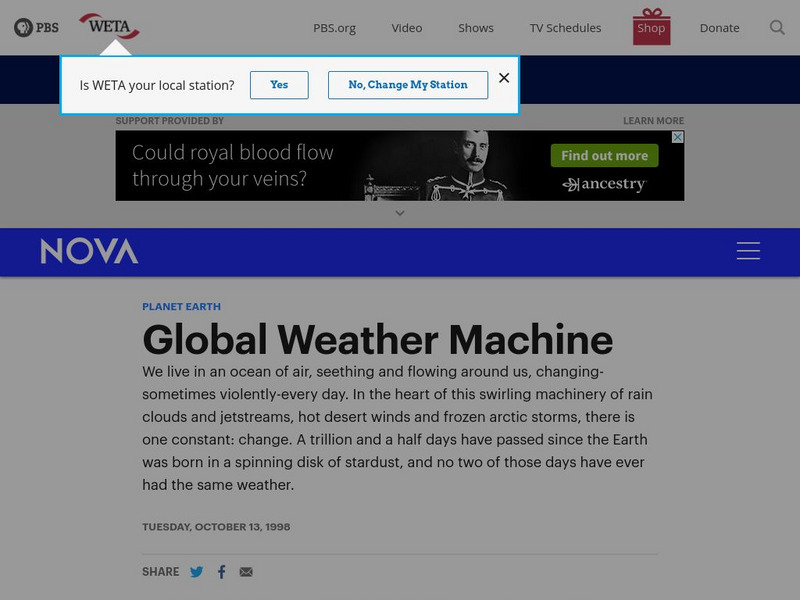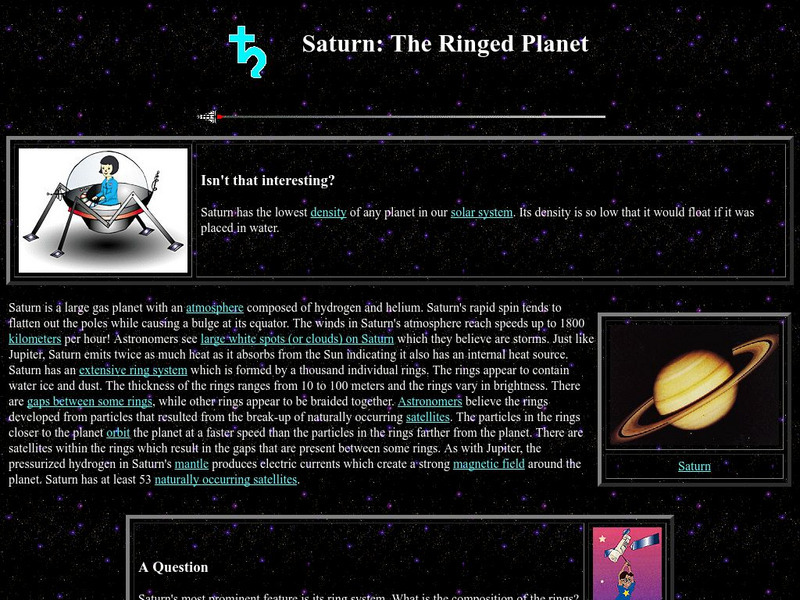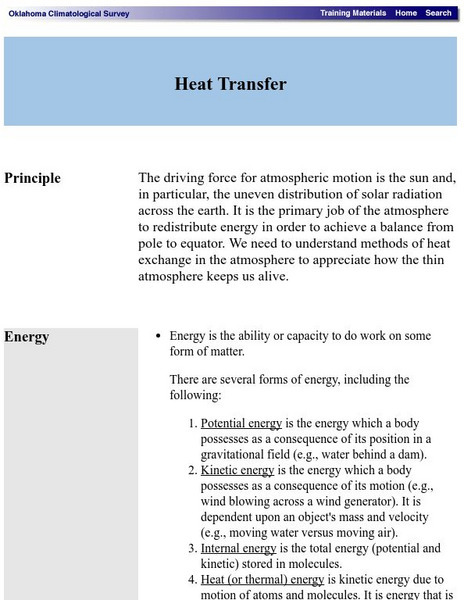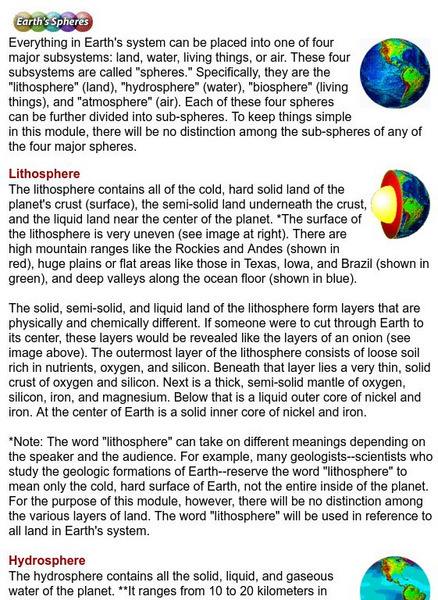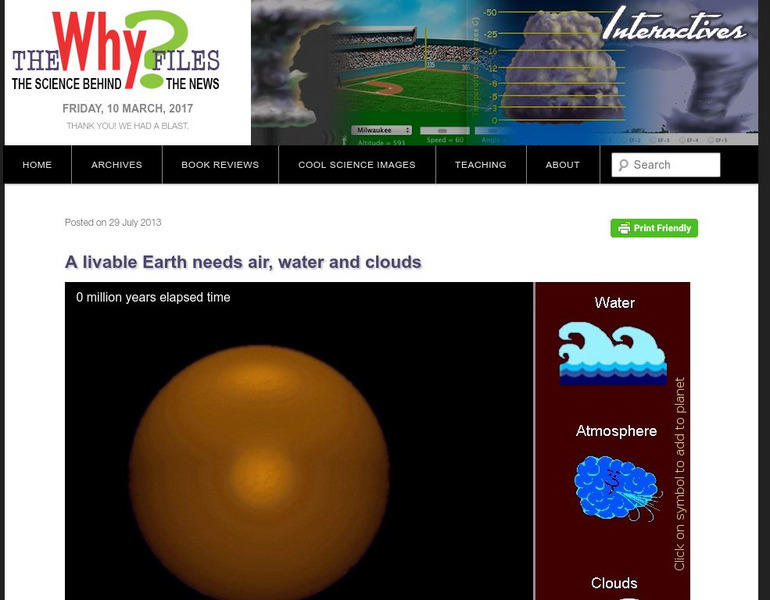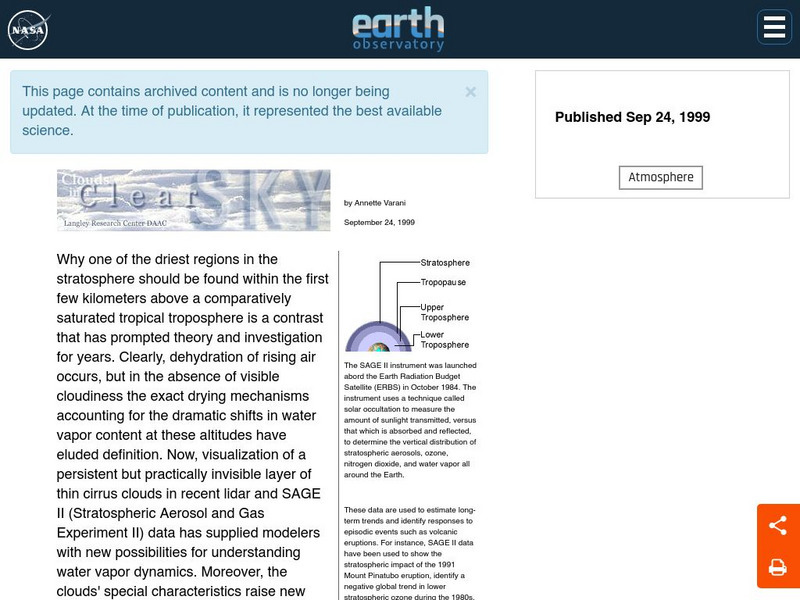CK-12 Foundation
Ck 12: Earth Science: Pressure and Density of the Atmosphere
[Free Registration/Login may be required to access all resource tools.] How the pressure and density of the atmosphere varies.
CK-12 Foundation
Ck 12: Biology: How Earth Formed
[Free Registration/Login may be required to access all resource tools.] Describes the Earth's formation.
CK-12 Foundation
Ck 12: Earth Science: Temperature of the Atmosphere
[Free Registration/Login may be required to access all resource tools.] How different temperature gradients separate the atmosphere into distinct layers.
Other
Astrobiology Magazine: The Rise of Oxygen
A look into what controls the rise of oxygen on the Earth and maybe on other planets as well.
CK-12 Foundation
Ck 12: Chemistry: Gases
[Free Registration/Login may be required to access all resource tools.] Properties of gases, why they exert pressure and atmospheric pressure.
CK-12 Foundation
Ck 12: Earth Science: Circulation in the Atmosphere
[Free Registration/Login may be required to access all resource tools.] Describes the convection cells present in our atmosphere.
CK-12 Foundation
Ck 12: Earth Science: Composition of the Atmosphere
[Free Registration/Login may be required to access all resource tools.] Describes the gases that the atmosphere is made out of.
CK-12 Foundation
Ck 12: Earth Science: Heat Transfer in the Atmosphere
[Free Registration/Login may be required to access all resource tools.] How heat is transferred in the atmosphere.
PBS
Pbs/global Weather Machine
This site explains wind systems as part of a global weather scheme, with illustrations.
NASA
Nasa Star Child: Saturn, the Ringed Planet (Level 2)
An introductory site with information about planet Saturn, with a good glossary, a brief quiz, and links for more information. Printable version also available.
Oklahoma Mesonet
Oklahoma Climatological Survey: Heat Transfer
A discussion from the Oklahoma Climatological Survey of the thermal factors effecting the movement of air masses in the atmosphere. Numerous topics such as methods of heat transfer, latent heat, phase changes (including sublimation and...
Oklahoma Mesonet
Oklahoma Climatological Survey: Earth's Energy Budget
This 2-part resource details how the Earth absorbs just enough energy from the Sun to sustain life. Content explores incoming solar radiation and outgoing terrestrial radiation.
Geography 4 kids
Geography4 kids.com: Changing the Atmosphere
This resource addresses changes affecting the atmosphere as a result of life on earth.
Center for Educational Technologies
Classroom of the Future: Earth Spheres
Everything in Earth's system can be placed into one of four major subsystems: land, water, living things, or air. These four subsystems are called "spheres." Specifically, they are the "lithosphere" (land), "hydrosphere" (water),...
California State University
Csu: The Sourcebook for Teaching Science: Earth Systems Interactions
Explains what the four spheres of the Earth are and describes how volcanic eruptions affect the different spheres. Also provides a list of events that are examples of interactions.
University of Wisconsin
The Why Files: A Livable Earth Needs Air, Water, and Clouds
Make Earth's climate livable by adding the right amount of air, water, and clouds to its surface and atmosphere.
CPALMS
Florida State University Cpalms: Florida Students: Earth's Spheres
Check out the tutorial which introduces the Earth's spheres. Viewers should be able to identify the Geosphere, Biosphere, Atmosphere, Hydrosphere and Cryosphere and know their differences and similarities.
Climate Literacy
Clean: Getting to the Core of Climate Change
Students investigate climate changes going back thousands of years by graphing and analyzing ice core data from Greenland and Antarctica. They use information about natural and human-caused changes in the atmosphere to formulate...
NASA
Nasa: Comet Shoemaker Levy 9 Collision With Jupiter
This site from NASA provides information on the Shoemaker-Levy collision which, even though the impact of Comet Shoemaker-Levy 9 with Jupiter happened in 1994, it continues to make news. Read the latest information related to the...
Other
S F Austin State University /Jupiter Comet Collision
Excellent links to books, images, videos, and articles about the collision of Comet Shoemaker-Levy 9 with Jupiter. Also links to a short page about Gene Shoemaker, one of the team who discovered the comet.
University Corporation for Atmospheric Research
Ucar: Fact Sheet for El Nino
This site from the Univ. Corp. for Atmospheric Research provides detailed information on El Nino and its effects on the trade winds is offered at this site, with satellite photos.
University Corporation for Atmospheric Research
Ucar: The Water Cycle
This site provides a comprehensive introduction to the water cycle. High schoolers construct a model to simulate parts of the water cycle. Includes background information, links to standards, lesson plans, and assessment ideas.
NASA
Nasa Earth Observatory: Should We Talk About the Weather?
Discover how scientists use the BOREAS to gather data such as heat, carbon dioxide, water vapor, and more to see what role these levels have on climate changes.
NASA
Nasa Earth Observatory: Clouds in a Clear Sky
This article introduces the different layers of the atmosphere and the clouds that are formed there. Scientists use instruments such as the SAGE 11 that help to measure amounts of sunlight, water vapor, and other conditions that affect...




